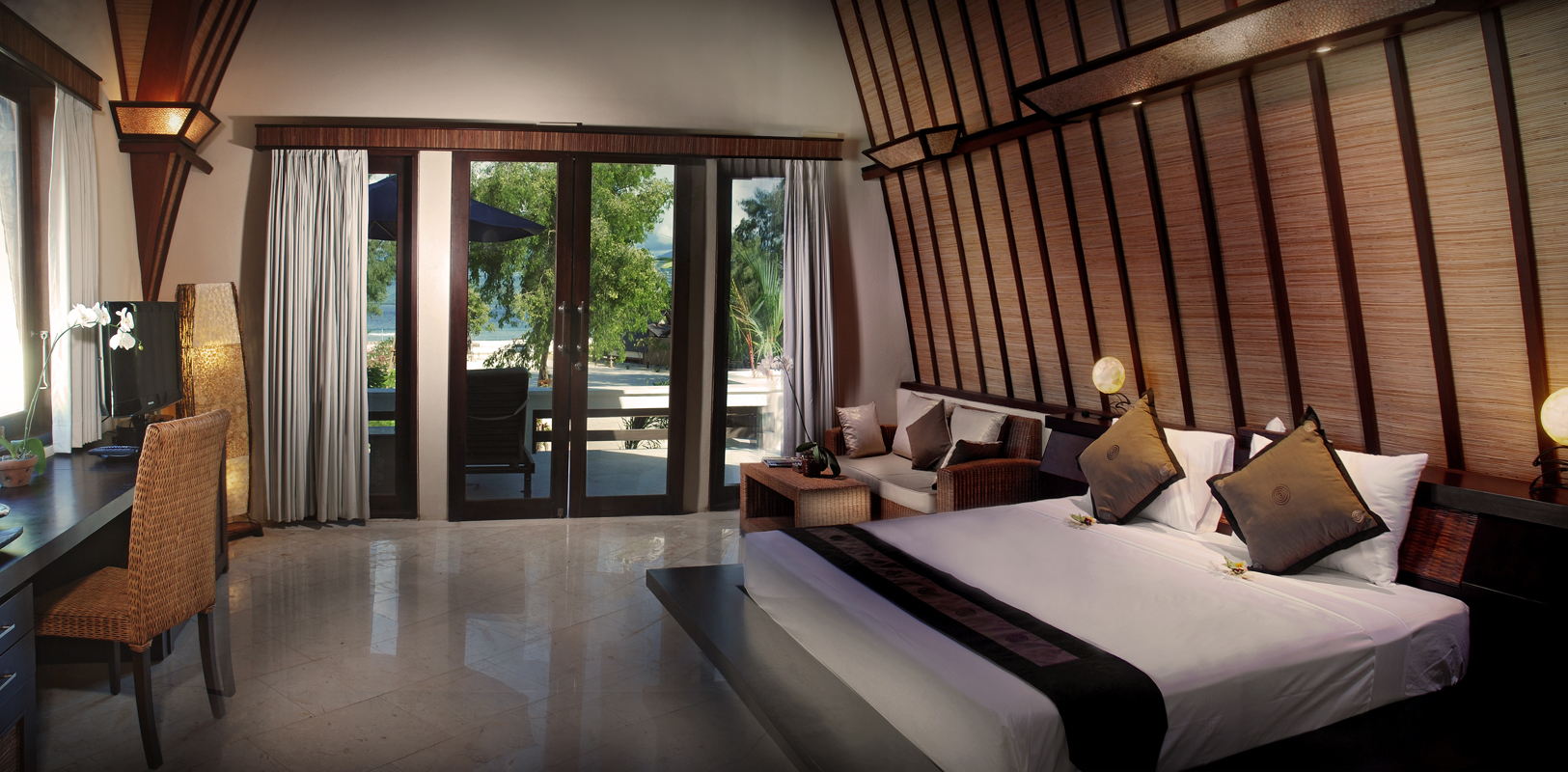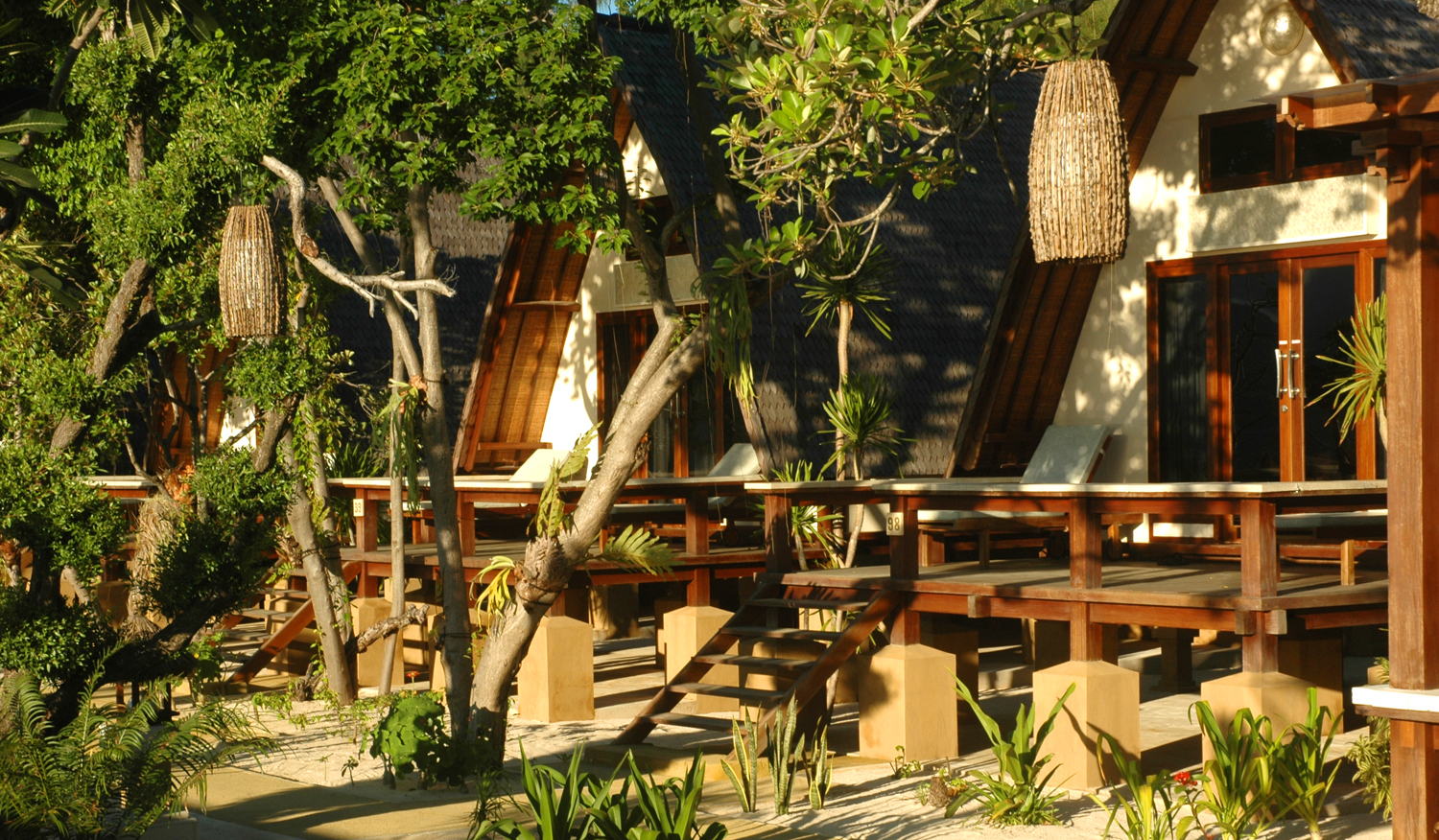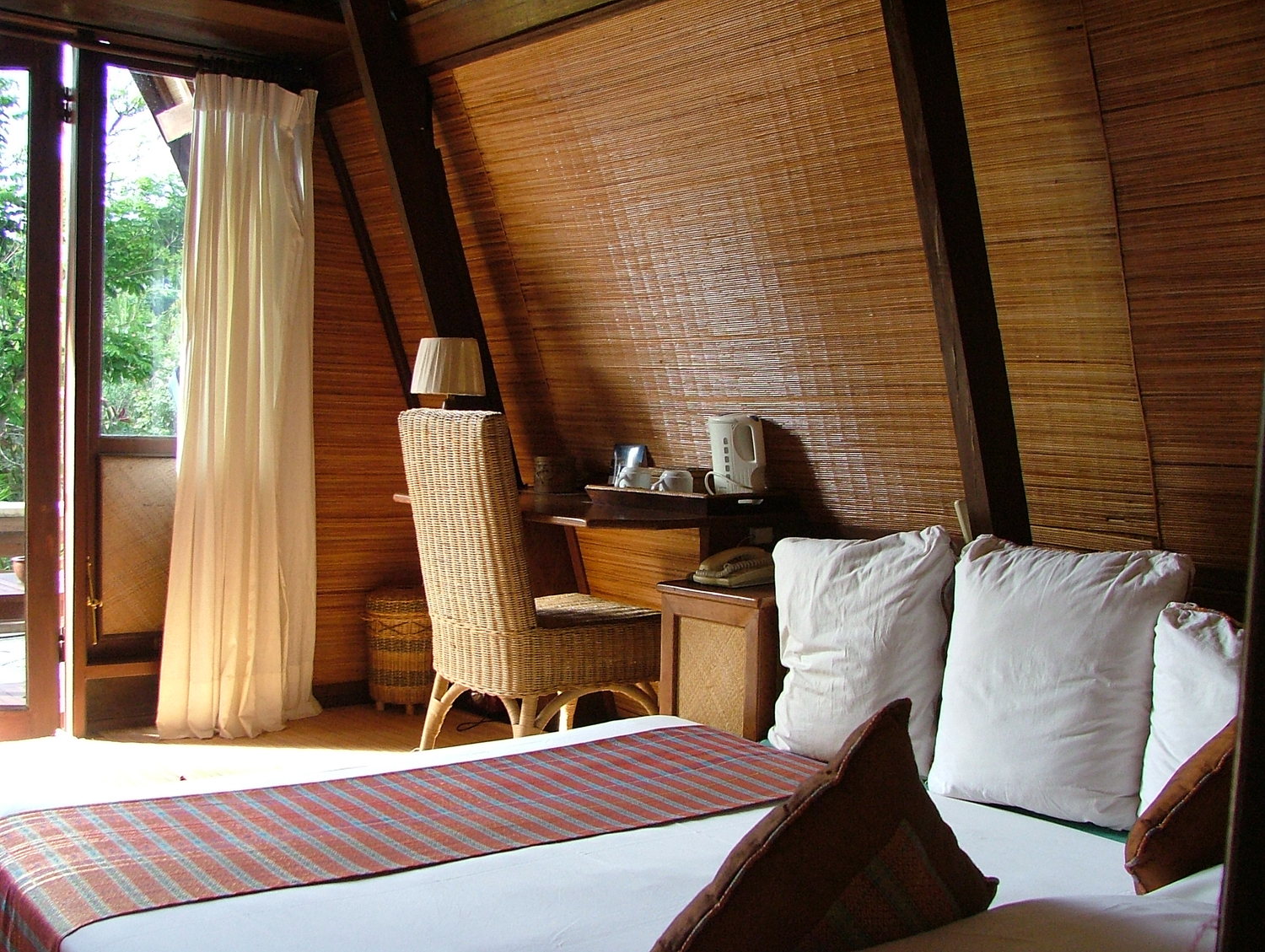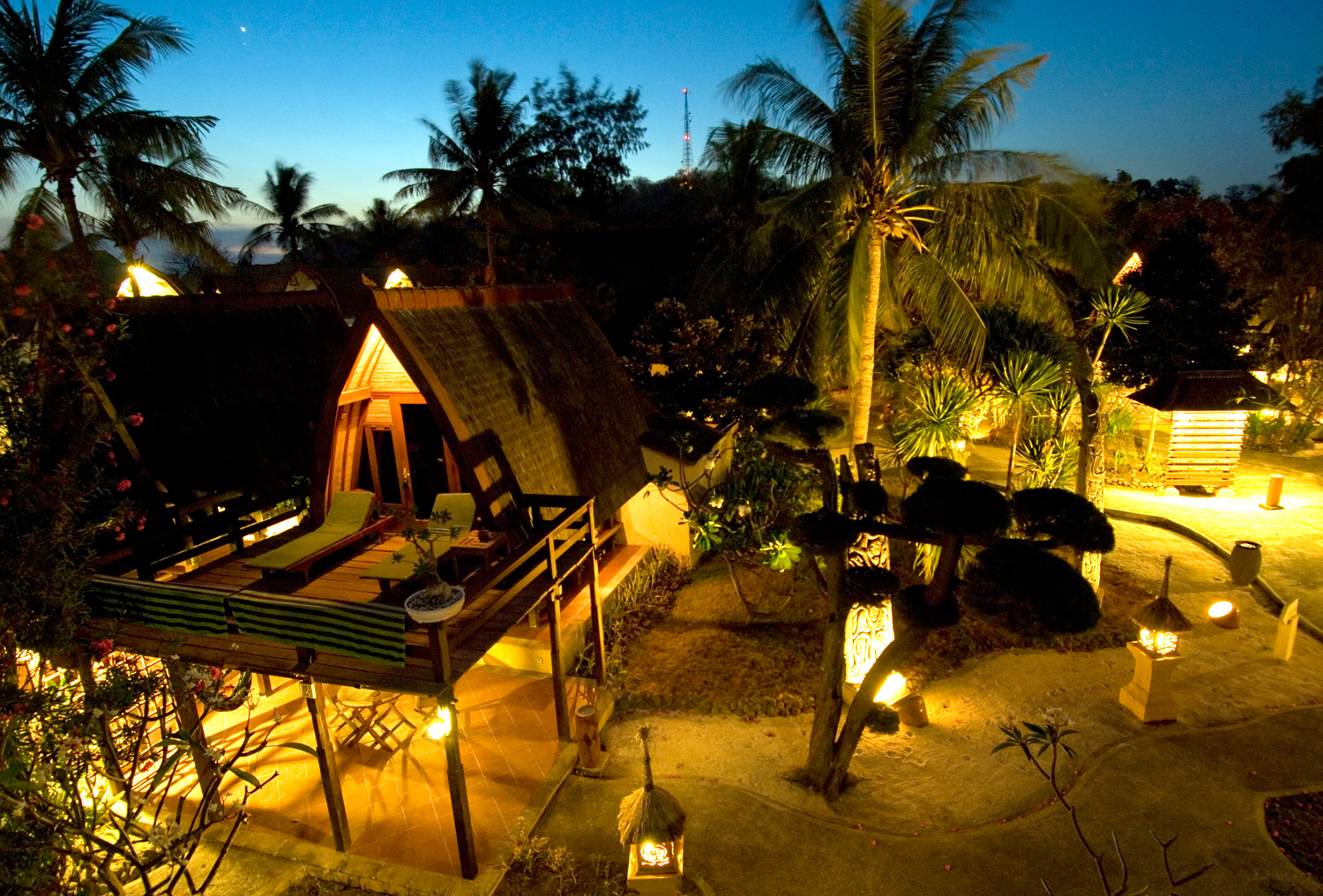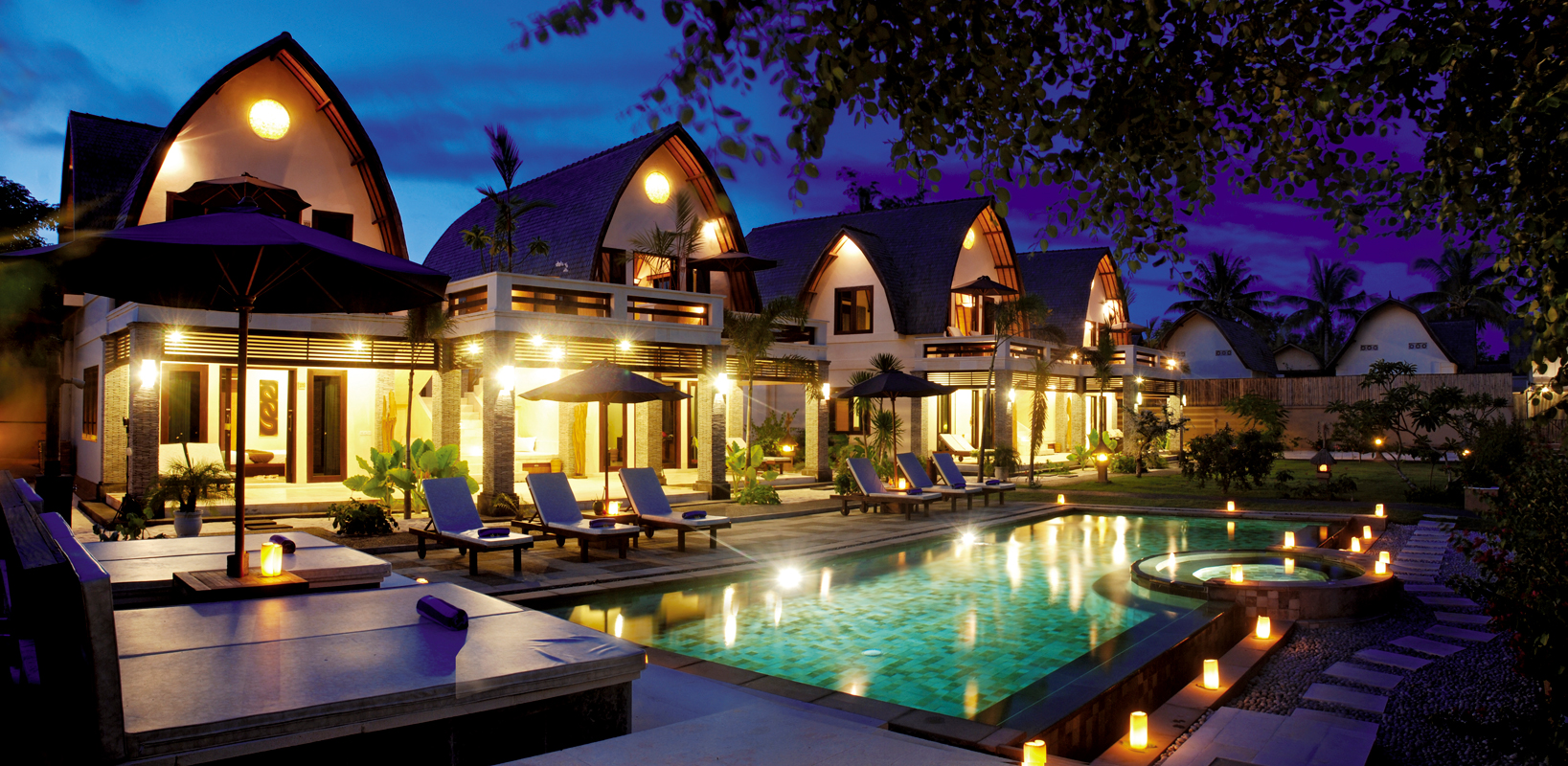
H O T E L V I L L A O M B A K
PURPOSE :
RESORT HOTEL
|
AREA :
32,200 SQM
|
LOCATION :
GILI TRAWANGAN, LOMBOK - INDONESIA
|
YEAR :
2002
One of the other beauties offered is Gili Trawangan Island, which boasts extraordinary natural marine beauty and cultural richness. Even the beach beauty on this island is no less captivating than the beaches in Bali.
Gili Trawangan, with a length of 3 km and a width of 2 km, covers an area of 2,954 meters, latitude 8º 20' - 8º 23' LS, and longitude 116º00' - 116º 08' BT. Gili Trawangan is the largest of the three other islands located at the tip of Lombok. The two smaller islands are named Gili Meno and Gili Air. Initially, the island was referred to as "terangang" or the place where turtles lay eggs.
Meanwhile, the word "gili" means a small island, describing the three islands and small islands on the other side of Lombok. Over time, the word "terangang" became difficult to pronounce, and many people eventually referred to it as "trawangan," with a meaning not much different from "tarangang."
In 2002, we were involved in designing this hotel in collaboration with an architectural firm named "Garis Bali," where the principal architect, Ir. Anang Karna, worked together with the Jeghier Architect team for the resort's design with careful consideration.
The hotel features unique rooms inspired by traditional architecture on Lombok Island, known as "lumbung" units. Additional hotel facilities include a swimming pool and a mini lounge area called "beruga." The vision of this hotel returns to nature with a mission to provide accommodation suitable for every type of traveler. The design method is based on observations in existing hotels, interviews with hotel managers, and literature studies. Based on interview and observation data, most tourists on Gili Trawangan come from young backpackers, married couples, and families.
The hotel's visitor segmentation mostly consists of young backpackers and married couples, with a preference for the unique style and natural architectural materials of the "lumbung" room units. The chosen design concept is "exploring the heritage of the Sasak Tribe" as the hotel's interpretation aligns with this vision. Based on the segmentation of the majority of visitors, the hotel must cater to luxurious room types in their villa units to fulfill the hotel's mission. The secondary design concept is to facilitate hotel guests in designing the hotel lobby and lounge area.
Gili Trawangan, with a length of 3 km and a width of 2 km, covers an area of 2,954 meters, latitude 8º 20' - 8º 23' LS, and longitude 116º00' - 116º 08' BT. Gili Trawangan is the largest of the three other islands located at the tip of Lombok. The two smaller islands are named Gili Meno and Gili Air. Initially, the island was referred to as "terangang" or the place where turtles lay eggs.
Meanwhile, the word "gili" means a small island, describing the three islands and small islands on the other side of Lombok. Over time, the word "terangang" became difficult to pronounce, and many people eventually referred to it as "trawangan," with a meaning not much different from "tarangang."
In 2002, we were involved in designing this hotel in collaboration with an architectural firm named "Garis Bali," where the principal architect, Ir. Anang Karna, worked together with the Jeghier Architect team for the resort's design with careful consideration.
The hotel features unique rooms inspired by traditional architecture on Lombok Island, known as "lumbung" units. Additional hotel facilities include a swimming pool and a mini lounge area called "beruga." The vision of this hotel returns to nature with a mission to provide accommodation suitable for every type of traveler. The design method is based on observations in existing hotels, interviews with hotel managers, and literature studies. Based on interview and observation data, most tourists on Gili Trawangan come from young backpackers, married couples, and families.
The hotel's visitor segmentation mostly consists of young backpackers and married couples, with a preference for the unique style and natural architectural materials of the "lumbung" room units. The chosen design concept is "exploring the heritage of the Sasak Tribe" as the hotel's interpretation aligns with this vision. Based on the segmentation of the majority of visitors, the hotel must cater to luxurious room types in their villa units to fulfill the hotel's mission. The secondary design concept is to facilitate hotel guests in designing the hotel lobby and lounge area.


